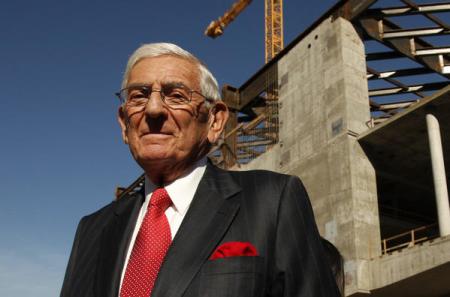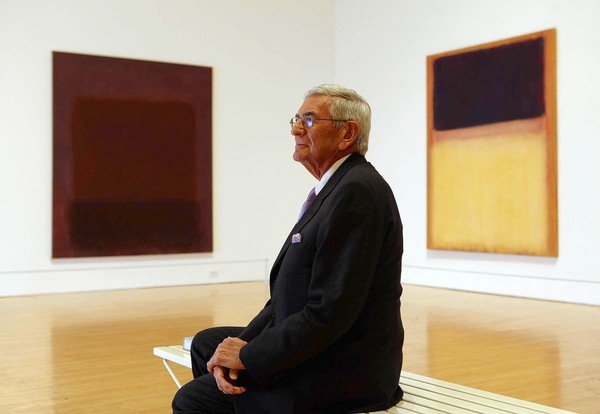Posts Tagged ‘Grand Avenue’
Chapter 2 (Part 2): The Race for The Broad – A Tale of Three Cities
“I think what Santa Monica has to offer is an incredible audience, a prime location and willingness to work with the Broads.”[i] – Kevin McKeown, Santa Monica City Councilman
Within just a few months of BCAM’s opening at LACMA, rumors began to circulate that Eli Broad had been less than forthcoming about his true intentions. Contrary to his initial denial of it, at the end of 2008 local newspapers began reporting Broad intended to build a new museum for his collections in Beverly Hills.[ii] The City of Beverly Hills quickly identified a prominent parcel of land at the intersections of Wilshire and Santa Monica Boulevards for the project. An architectural competition was announced, a short list determined (Thom Mayne, Jean Nouvel, Shigeru Ban, Rafael Viñoly and Christian Portzamparc), and schematic renderings of the site plan were even published. [iii] If this speedy development seemed too good to be true, it’s because it was.
By the end of 2009, Broad announced that there were actually multiple cities vying for his collections and a new museum building to house them. Beverly Hills, previously unchallenged was suddenly competing with the City of Santa Monica, and Broad’s foundation announced there was also a third, unnamed city in the running.[iv] This of course turned out to be the City of Los Angeles. Broad said he wasn’t, “trying to play the two [three] municipalities against each other […] he hope[d] that by talking to several different cities he c[ould] accelerate the process of building.”[v] But play them against each other he did, for six months, trying to secure the best deal.
Chapter 1 (Part 3): MOCA’s White Knight
“I had no intention of getting involved in MOCA, until it got into trouble”[i]
– Eli Broad
In fall 2008, a long-term beneficiary of Eli Broad’s largesse was in alarming financial trouble; the Museum of Contemporary Art (MOCA) could no longer hide its vertiginous financial mess. In an article titled “L.a.’s Moca In Deep Financial Trouble,” the Los Angeles Times reported MOCA had mismanaged its finances for more than a decade.[ii] The board of trustees had almost completely drained the $200 million endowment by regularly dipping into it to cover costs of expensive exhibitions and operating overhead; overspending an average $1 million a year since 2000.[iii] The public was shocked and enraged; consequently, there was a rapid exodus of board members.[iv] MOCA needed a hero with a rescue plan.
LACMA’s Michael Govan proposed one rescue plan: a partnership in which MOCA would maintain its independence and retain at least one of its venues (the Geffen Contemporary in Little Tokyo) and in exchange MOCA would share its collection with LACMA.[v] Details of the offer were never fully disclosed, but it seemed to be Govan’s attempt to secure a large and well-regarded contemporary art collection for LACMA, and a way to reduce (if not eliminate) LACMA’s need of the Broad collections.
Govan’s offer seemed to be the final straw in the already strained relationship between him and Broad. Broad openly chastised Govan in the Los Angeles Times for his proposed merger plan, and curiously quoted the film Jerry McGuire to demand, “Show me the money.”[vi] Broad had proposed his own rescue plan and was offering a $30 million lifeline to MOCA. Govan was meddling in his plans.




